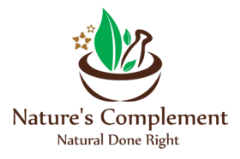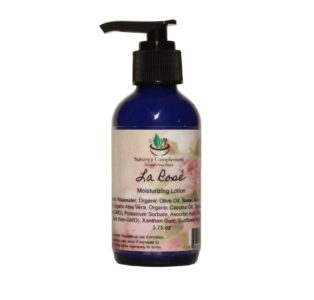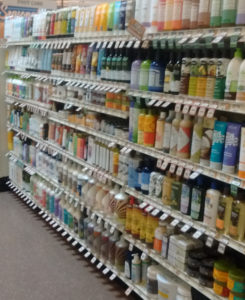
And why I don’t share my formulas.
I often get asked for my product formula recipes, and sometimes I get asked how long it takes me to develop one of my creams. The first question I cannot answer, for reasons explained below. The second question took me some time to really evaluate and figure out how long it actually does take me to develop my creams. You see, there’s a difference between following a recipe in a cook book and making the tastiest and healthiest meal you have ever had. The actual development of a new product is much more involved than simply following a recipe. It involves research, experimentation, critical thinking, and in our case, outside the box creative thinking to make products work without using toxic chemical ingredients, which means there is usually a specific process involved, rather than just a mixture of a bunch of ingredients.
So I decided to tell you how long it really takes me to bring a quality product to market. Because it’s not as easy as it sounds.
I know some of my friends have commented how easy this stuff comes to me, how I have all this knowledge about ingredients, chemical reactions, biological responses, etc. But truth is, I don’t really have all of this knowledge. Sure, I know a lot about common ingredients, relevant chemistry, skin cell biology, etc., that we’ve researched over the years, and I can recite such information. But there are far too many compounds to know them all. I just happen to know where and how to search for information on a given topic. I’m no savant that’s for sure. But I have spent enough years studying and researching that perhaps it does come a little easier to me than non-scientists.
Truth be told, with hundreds of thousands of “natural” ingredients, chemical compounds, and combinations of these, it is really impossible to know everything (unless you have a savant memory, and I do not). When I first started my business, it was very small, and only had a few basic items that I used for myself out of necessity.
My research started with researching the ingredients I found in store bought soaps, shampoo, toothpaste, and so on. Eventually we got smart and stopped buying the items first to research the ingredients later, and started looking for ingredients online. This saved a good bit of money, as we came to a realization that few products in the marketplace are truly healthy, natural, or even well researched. In fact, we came to the conclusion that many products are quite poorly formulated, and only survive in the marketplace because (sadly) marketing tends to have more influence on sales than product quality.
And that’s where the product development process starts in. The following is the process we have developed here at Nature’s Complement:
1. Research the chemistry needed for a product to work. For example, what kind of lipids are best used for what type of product? We covered this to some degree in our article “Understanding Oils & Fats For Health And Beauty”. What ingredients are safe to stabilize the product (if any). What ingredients can I add to make the product smell good without compromising health and safety? We covered these two questions in some depth in our articles “Personal Care Product Preservatives, And The Truth” Part 1 and Part 2. However there are still many more chemical ingredients we still need to write about, such as phthalates, fluoride, and aluminum, which we will cover in the future.
This type of research is first done independently by Rob and I on our own time. This research includes evaluating peer reviewed research studies found on PubMed, searching through various online MSDS databases, searching through industry databases, and sometimes for basic starting points we even check Wikipedia. If we can’t find enough data using those we might also use Google Scholar. I’m estimating this step takes probably about ten hours a week each for about four weeks before we both feel we have enough scientific literature to compare notes. So let’s estimate between the two of us, 80 hours for this part.

2. We compare notes. My research against his, his research against mine. Review of which books we referenced, what studies we found. Sometimes we agree, sometimes we have to research some more. These are exciting “date nights” at our house. Fortunately, we’ve discovered we actually enjoy these date nights. We spend a few hours a night for several nights in a row, sometimes a full week just comparing notes. Then another four hours a night for a couple more weeks to do further research. Let’s say this is about 40 hours between the two of us.

3. We formulate a variety of recipes to try: which ingredients we want to include, what percentages we want to attempt based on the research and so on. Fortunately this only takes a few hours for the two of us, as by then we’re quite familiar with the ingredients we want to use. Sometimes we are uncertain about ideal ingredient concentrations, so we consider percentages used in the research literature with results, based on what we’re creating and what percentage we want to attempt. So let’s say four hours each, for a total of eight hours for this phase.

4. Now we have to find the ingredients: the supplier, where it comes from, is it sustainably harvested, is it produced organically and if not, what chemicals are used, what is it mixed with or is it pure, etc. This is actually a very time consuming process. For instance, in trying to find an organic source of astaxanthin, I found that I had to do very serious research. Fake astaxanthan is not only on the market, but is too common in the distributor world. I had to teach myself how to recognize real astaxanthin based on what form it comes in. Then I had to find a reputable distributor that actually responds to inquiries, offers an MSDS or equivalent. I like to check. You wouldn’t believe how many raw ingredients that are claimed as just pure x ingredient, arrive packaged with other unwanted ingredients.
I also check to see if the ingredients are at risk for being genetically modified, and if so, I have to check with the manufacturer of what source they use for their said ingredient and what process is used to isolate it for sale. Sometimes manufacturers don’t bother to respond, other times they send convoluted informational sheets that require much re-reading to make sure I’m understanding it correctly.
Then I’ve either found a source, or I have to keep looking. This research time varies. For instance, finding a good source of non-GMO citric acid probably took about a day of research followed by another day of communication/responses, so let’s say 16 hours. But the astaxanthin I mentioned earlier, I spent a good solid seven days on the original research, only to realize that the distributor I was looking at was not fully honest, and then starting over to find a more reputable distributor. I spent a good two solid weeks of non-stop research on that ingredient – which I’m not yet even sure if I’m going to use in an updated product formulation.
Once the ingredients are ordered, paid for, and we patiently wait for them to arrive, we double check our recipes to see how many different formulas we are going to try. Then once the ingredients arrive, we test them, compare them, do our best to evaluate them to make sure we ordered from the right source and we do indeed have the pure ingredients we ordered.
To make the math simpler, I decided to take an average of a difficult ingredient and a simple one. So with the astaxanthin, let’s estimate eight hours a day times seven days times two weeks amounts to about 112 hours. So for simplicity sake, 16 hours for citric acid versus 112 for astaxanthan divided by two gives me an average of 64 hours per ingredient to find a quality source. But don’t forget that sometimes manufacturers disappear (lack of business or whatever reason), and I have to re-do this process for some ingredients if my original supplier disappears.

5. Developing the formula. This part gets tricky as sometimes we have only 10 different formulations we came up with, while other times we have to further figure out how to dissolve specific ingredients in their necessary carrier. This is actually the longest part of the development phase as sometimes we have to wait for things to heat up, then to cool, then look at alternative ways of mixing, infusing, whatever. The actual production R&D gets tricky. Plus we choose to follow good laboratory manufacturing practices (GLP/GMP), so not only do we have to sterilize all our equipment over and over, but we have to keep meticulous notes on the process.
Things go wrong, recipes don’t turn out as expected, and sometimes we have to go back to our formula to see what went wrong, or how we can correct it. This means reviewing the literature, referencing books, avoiding headaches.

On average, each product takes about ten different formulations before we get to a formulation that might start to resemble our final product. After that, the fine turning can get a little rough as well. For instance, our dish soap has gone through five different formulations so far, and we are finally at the point where we are fine tuning. That means that we have decided on the final ingredients in our dish soap, now it’s just a matter of how much of that ingredient we want to add. 1 oz? 1.1 oz? 1.15 oz? As you can see, this can get tricky, expensive, not to mention time consuming.
I had decided to track the time spent on the dish soap and the sunscreen, and they seem to be head to head on time needed to bring it to development. Though this is the second round of making sunscreen as our first one included an ingredient that had its research redacted (partly why we decided to reformulate). So far, we have spent at least two months on developing the dish soap and at least four on the sunscreen (times 2 – second round remember?). Granted, some days it’s a matter of mixing the ingredients we discussed the day before, to see what the result will be, and it only takes maybe an hour, while other days we’re trying to figure out the best infusion, which can take the entire day. If we were to pretend we only work eight hours a day, five days a week, then our dish soap development has taken both of us two months thus far, and our sunscreen, four months each. And we’re not done yet. Both are in their final phases however. In reality, since we also have other aspects of the business to run, we don’t spend all our work time on formulations. So we’ll take an average here and say it takes two people three months of half time work to develop a formula. I am going to estimate that at 500 hours for the two of us. That may seem like a lot to someone who just throws together home made products haphazardly. But since we are creating commercial quality, professionally formulated products, we want to make sure the products work as intended and we get it right. If we were to just follow a standard commercially available formula, then we would be no different than the major manufacturer who does not care what goes into a product since there are literally no laws to control for what’s in a skin cream, soap, or even toothpaste.
6. Packaging. You wouldn’t think this takes a long time, but it does. We prefer glass, but sometimes that is not practical, so our second choice is HDPE plastic. Fortunately, manufacturers that produce containers are very good at documenting which materials a jar is made out of, and this part is a matter of deciding what kind of look we might want, which turns into a what kind of look are we willing to settle for based on what’s available in the type of glass/plastic we desire. Then we must buy samples, and test the jars/containers to make sure they function as they should. This part actually doesn’t take long other than waiting for the mailman to bring the test jars to my door. Let’s say a day for the research, and a day to test the jars. So 16 hours total.

7. Cost analysis. This one is not pretty. Not only do we have to consider the cost of the raw ingredients, but the cost of the jar, label, and time. So far, as you can see by the hours adding up, much of our work time has been “volunteer” work, as I certainly can’t charge my real time for a bar of soap. But I still have to make sure I’m not taking a loss on the actual product (an easy thing to do once all is added up and you realize you really don’t want to charge your customers $10 for a bar of soap). Thankfully I’m good at numbers, and I can usually figure out our cost in just a couple days time. This includes updating my spreadsheets, receipts, website prices, etc. So let’s say I’m having a really good couple of days, and we’ll just estimate about 16 hours.

8. Product testing. This phase is fun for me. This is where I get to give out samples to my trusted testers and evaluators and I patiently wait for their feedback. Sometimes I come up with a questionnaire for them to fill out, and other times, when I feel really good about something, I just let them offer whatever opinions they have. This usually requires a few lunches with friends, some phone calls, emails, follow-up calls for further questions, etc. This time is really hard to judge, as really, everyone else is doing the work at this time, and I’m just collecting feedback. It’s also done sporadically over a few weeks. So I’ll go easy on the time here and just claim the time to create the questionnaire (about an hour), make the samples (at least two-three hours), and gather and evaluate the results (about four hours). So my time in product testing we’ll estimate at eight hours. This of course doesn’t include my personal testing of the products as I’m evaluating them at the same time as my testers.
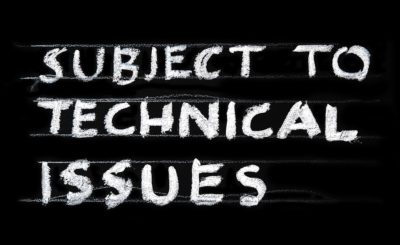
9. Once all the feedback has been gathered, we decide if we want to alter the formula and go through the testing again, or keep it as is. In this scenario we’ll pretend we came out with the perfect product, and nothing needs to be changed. The next step is naming the product, designing and creating the label, instructions, warnings, checking FDA website to make sure we are compliant, etc. If you’ve seen some of my labels, you know I take this job very seriously. Then we have to edit the final label, print it, put it on the jar, etc. Getting that final label to production takes a minimum of two days including the editing. So we’ll go with 16 hours including Rob’s time.

10. Sell the final product. To take this process of getting a product to the consumer a step further, we then have to develop relationships and interest with retail store decision makers to carry our products. Retailers typically have an involved vetting process they go through to decide what products to carry, so that involves additional work on our part. This too adds up in hours. I’m a scientist, not a marketing guru, so I do my best. But I’d rather be working on product development. Regardless, people have to find us, so we’re slowly putting ourselves out there to be found. This is not a simple task either, as most distributors seem to have their own unique system for ordering and inventory, and that means I have to list all my products and answer questions in each of their systems. Ordering products directly through own channels of distribution via our web site store, our Amazon store, or our original Etsy store is great, but that does not offer us the same marketing exposure that we get when our products are on retail store shelves.
In all honesty, I have no way to add up these hours, as it depends on what distributor source you go with, and how many products you choose to list with each source. Plus some of these include communication with buyers, free products samples for their review, price negotiation, and so on. On average I will estimate it takes six days at eight to nine hours a day to get into each retail store, for a total of about 52 hours.
The same goes for exposure events. One event may take a Saturday out of my life, while others take four days. Some events require large amounts of paperwork and fees, while others I can split the cost with some of the distributors I work with. Putting solid hours and numbers on these types of activities is near impossible, so I won’t include this in my total.
And none of this includes the production of these products once sold.
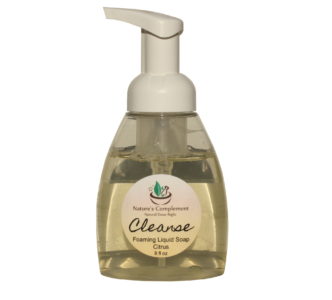 So there you have it, this is what it takes to bring a quality product to market. My estimates come out to 800 hours not including marketing or ongoing product production, just the development from concept to store shelf. I say estimates because different products take more or less time, depending on type of ingredients, what the final goal is, and some information we don’t have to research as much, such as what type of oils we prefer to use in our lotions. But as you can imagine, at about five months of full time work, only one product is developed. Maybe I’m wrong, but that’s a lot of work to just give away, and that’s why I don’t. I think many people may not realize the amount of time, work, and money that we invest in developing new products that are both safe and effective – a rarity these days.
So there you have it, this is what it takes to bring a quality product to market. My estimates come out to 800 hours not including marketing or ongoing product production, just the development from concept to store shelf. I say estimates because different products take more or less time, depending on type of ingredients, what the final goal is, and some information we don’t have to research as much, such as what type of oils we prefer to use in our lotions. But as you can imagine, at about five months of full time work, only one product is developed. Maybe I’m wrong, but that’s a lot of work to just give away, and that’s why I don’t. I think many people may not realize the amount of time, work, and money that we invest in developing new products that are both safe and effective – a rarity these days.  This of course doesn’t include the financial cost and time put in to our college educations in order for us to have greater knowledge, skills, and abilities to do the research needed to bring real, high quality products to market.
This of course doesn’t include the financial cost and time put in to our college educations in order for us to have greater knowledge, skills, and abilities to do the research needed to bring real, high quality products to market.

It doesn’t end there; that’s just developing the product. Running a business means there’s always more work to do. Marketing, product and sample production, website development and maintenance, exposure at events, etc. Granted, if you are looking to just make a product for your own personal use, you don’t have to do all the extra work such as jar research, label design, marketing, etc. But I’m sure by now you can see why I don’t just openly post my formulas on my website for everyone to copy. Perhaps because what most people see is just my final product, and not the time and work behind the product; that it only appears like it is something very fast and easy for me. But I assure you, it is anything but.
And yes, there are manufacturers out there that will provide your formulas for you; they even offer standard basic recipes to start. But in all reality, that is exactly what we at Nature’s Complement are trying to avoid. Those standard recipes are usually based on synthetic chemicals, emulsifiers, thickening agents, fragrances, and preservatives that merely replicate a formula that looks, feels, and “functions” like all the other products at the store, and usually suffer from all of the same health concerns that we are trying to avoid with our safe, all natural products.
Making just more cheap, mediocre, questionable products is not our goal. Anyone can do that. Our goal is to create the highest quality products that are not only safe, but effective, and without all the unnecessary ingredients, while still being affordable to most people. The type of personal care products we create are unlike most products you can find at the store. Our unique products contain R&D that no generic “off the shelf” formula could hope to replicate. Frankly, this type of development is not so easy, because as far as I can tell, no one else has done this. No one else has taken the latest and greatest research and put it all together in a jar. It’s not an easy task, it’s not a quick task, and it’s certainly not something that everyone is willing and capable of doing.
So while I won’t give out my formulations, here is what I will do:
1. I will always offer full disclosure of the ingredients in each product.
2. I will always seek out and use the highest quality raw ingredients that I can find.
3. I will never put any ingredients in my products that are either clearly harmful or have questionable data.
4. I stand by my products 100%.
5. I will continue to offer free information on my website via articles that we write, and we will always offer references of where we found such information.
I hope this article brings some clarification to what it takes to bring truly innovative, quality products to market, and that it also helps to explain the value that our products offer compared to the numerous generic “me too” products one can find at any store. The reality is that most of those products are not formulated with your health in mind. They are formulated with questionable ingredients so they are cheap to make, can stay on the shelf for a long time, and to be profitable to the companies that sell them. All of this with little regard for consumer well being. The deficiencies in ingredients and formulation are then covered up with slick marketing and advertising campaigns to fool consumers. It is an unfortunate state of affairs, but that is what sets Nature’s Complement apart: we don’t operate that way, we operate with integrity, and put people’s health first.
Tober
Nature's Complement is a participant in the Amazon Services LLC Associates Program, an affiliate advertising program. If you purchase products on Amazon through any of our affiliate links, we get a small percentage of the transaction, at no extra cost to you. We spend a lot of time writing the articles on this site, and all this information is provided free of charge. When you use our affiliate links, you support the writing you enjoy without necessarily buying our products. (However we would appreciate if you would do that too!) Thank you for helping to support our work, however you choose to do so.
These statements have not been evaluated by the Food and Drug Administration. This information and/or products are not intended to diagnose, treat, cure or prevent any disease.
